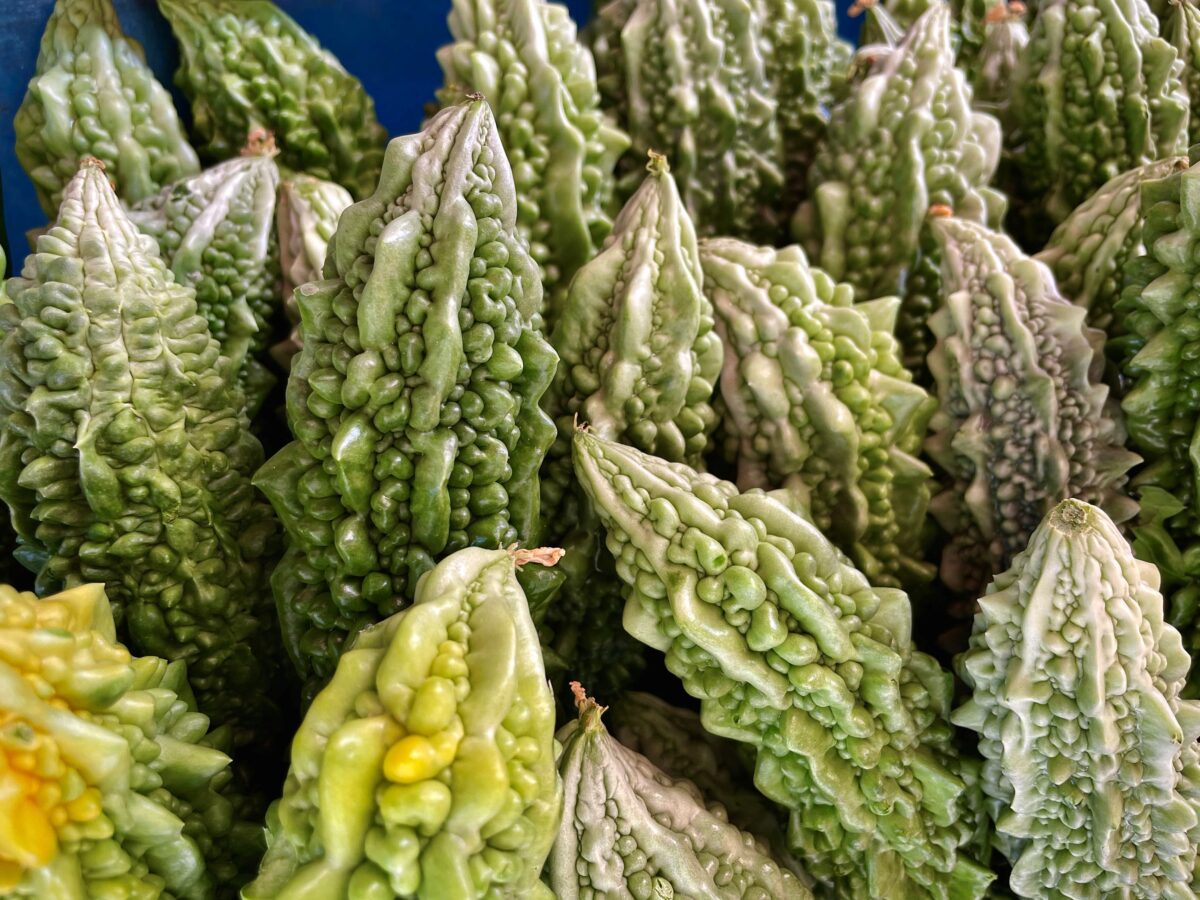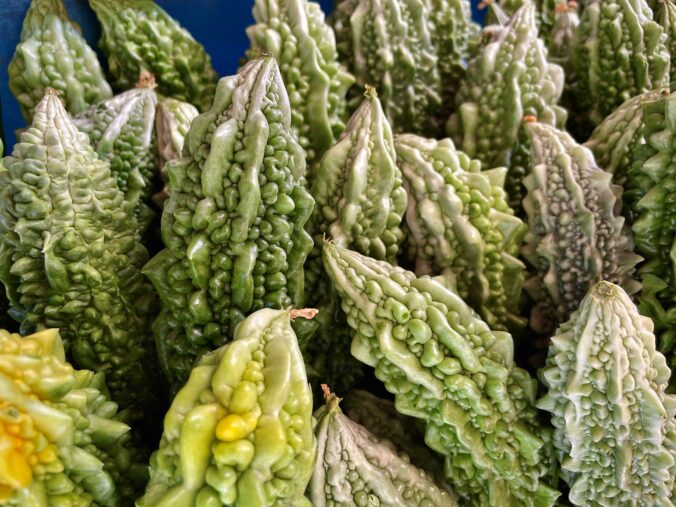The Genetics of Bitter Taste Perception
Aira
on
November 3, 2023

Latest Posts
Table of Contents
The Genetics of Bitter Taste Perception
Date of Content: October 18, 2023
Written by: Avanthika Nityanand
Reviewed by: Maarit Tiirikainen, PhD
Why Do Some Foods Taste Bitter?
Bitterness is one of the five basic tastes, along with sweet, salty, sour, and umami. Evolutionarily, the bitter taste perception helped humans detect potentially harmful substances in food. Many toxic substances in nature taste bitter, so detecting bitterness was a protective mechanism against consuming something poisonous.

What is PTC?
Phenylthiocarbamide (PTC) is a chemical that tastes either very bitter or virtually tasteless, depending on the individual. Arthur Fox, a DuPont lab chemist, discovered it by accident in the 1930s. Since then, it has been researched primarily to understand genetic variations in taste perception. PTC is not found in foods, but the ability to taste it (or not) is a commonly used measure to understand genetic variability in bitter taste perception.
Do Some People Perceive Bitterness More Than Others?
Bitter taste perception varies among individuals. Some people are sensitive to bitter compounds, while others may find the same foods milder or tasteless. These differences can be due to several factors, including the number and type of individual taste buds and genetic factors.
Is Bitter Taste Perception Genetic?
Genetic factors play a significant role in bitter taste perception. Twin studies, family analyses, and population research have demonstrated that the inability to taste PTC is passed down in a manner closely resembling Mendelian recessive inheritance.
Molecular Basis Of Bitter Taste Perception
The molecular basis of bitter taste perception is a complex process that involves the interaction between bitter compounds and specific taste receptors on the tongue. These taste receptors are part of a family known as G protein-coupled receptors (GPCRs).
When a bitter compound enters the mouth, it binds to specific receptors on the tongue known as TAS2Rs, or taste receptor type 2. Humans have approximately 25 distinct TAS2R receptors, each sensitive to a diverse range of bitter compounds. When a bitter compound binds to a TAS2R receptor, it activates a cascade of events inside the cell that lead to the perception of bitterness.
One of the key components in this process is the G protein, which is activated when the bitter compound binds to the TAS2R receptor. The activated G protein then stimulates a series of downstream signaling pathways, leading to an increase in calcium levels inside the cell. This increase in calcium then triggers the release of neurotransmitters, which send a signal to the brain indicating the bitter taste.
In addition to the TAS2R receptors, other molecules are also involved in perceiving bitterness, including ion channels and other receptors. These molecules contribute to the complexity of bitter taste perception and help to fine-tune the response to different bitter compounds.
TAS2R38 and CA6
The group of various TAS2R receptors plays a significant role in the perception of bitter taste. Consequently, the gene encoding one of the receptors, TAS2R38, became a candidate for genetic association studies.
The TAS2R38 a gene is located on chromosome 7 in humans. The protein produced by the TAS2R38 gene is located on the surface of taste receptor cells in the taste buds, primarily on the tongue. When bitter compounds, such as PTC (phenylthiocarbamide) or PROP (6-n-propylthiouracil), bind to this receptor, it leads to a series of reactions in the cell that results in the perception of a bitter taste.
Taste sensitivity plays a pivotal role as a biological factor in determining food preferences. There are three notable SNPs within the TAS2R38 gene: rs713598, rs1726866, and rs10246939. These SNPs form two prevalent haplotypes, PAV and AVI. Additionally, an SNP found in the CA6 gene, rs2274333, responsible for producing carbonic anhydrase VI (CA6), has been linked to the perception of bitterness. The consumption level of bitter foods might have implications for specific health results.
In a study involving a group of 118 Polish women aged over 60, researchers investigated the relationships between the TAS2R38 diplotype, CA6 genotype, and the consumption of bitter-tasting foods. A food frequency questionnaire determined the consumption patterns of bitter foods such as Brassica vegetables (e.g., cabbage), grapefruit, and coffee. Those with the AVI/AVI genotype consumed coffee more regularly than the PAV/PAV homozygotes. Similarly, the A allele carriers of CA6 drank coffee more often than the GG homozygotes. Also, carriers of the PAV haplotype of TAS2R38 and the A allele of CA6 chose white cabbage more frequently.
Find out your genetic predisposition to Bitter Taste Perception from LifeDNA’s Nutrition Report’s “Sensitivity to Bitter Food” trait.
Are Bitter Foods Beneficial?
Bitter foods have several intriguing benefits.
Digestive Health: Bitter foods are known to stimulate the production of digestive enzymes. This can aid in the breakdown of food and the absorption of nutrients, promoting better digestion.
Liver Detoxification: Some bitter foods, like dandelion greens and artichokes, support liver function and detoxification. They can help increase bile flow, a necessity for digesting fats and removing waste products from the body.
Rich in Nutrients: Many bitter foods, especially green leafy vegetables like kale, contain vitamins, minerals, and antioxidants. These nutrients can boost overall health and protect against various diseases.
Appetite Regulation: Bitter foods can help regulate appetite by reducing hunger hormone levels. This might be beneficial for weight management.
<You May Also Like: The Genetics of Appetite>
Anti-inflammatory Properties: Some bitter foods have anti-inflammatory properties. For instance, the compound sulforaphane found in broccoli can combat inflammation.
Blood Sugar Regulation: Bitter melon, in particular, is known for its ability to help regulate blood sugar levels, making it beneficial for people with diabetes or those at risk of developing the condition.
<You May Also Like: The Genetics of Carbohydrate Metabolism>
Promote Heart Health: Foods like dark chocolate, which can taste bitter, are rich in flavonoids that may support heart health by improving blood flow and reducing blood pressure.
While bitter foods come with various health benefits, it’s essential to consume them as part of a balanced diet and not in excess. Some extremely bitter foods or compounds might be harmful in large amounts or even in lesser amounts for a few individuals. As always, it is a good idea to consult with a nutritionist or a healthcare professional before significantly changing the diet.
Interesting Ways to Enjoy Healthy Bitter Foods
Eating bitter foods can be challenging if you are particularly averse to the bitter taste. Yet, they are packed with essential nutrients and health benefits, making them a desirable addition to a well-rounded diet. If you want to incorporate more bitter foods into your meals without compromising on flavor, here are some attractive ways to enjoy them:
Smoothies: Add bitter greens like kale, arugula, or dandelion greens to your morning smoothie. Combine them with sweet fruits like mango, banana, or berries to mask the bitterness.
Grilled Brussels Sprouts: Grilling can transform the taste of these bitter veggies. Toss Brussels sprouts in olive oil, salt, and pepper and grill them until they are slightly charred. The caramelization reduces their bitter flavor.
Bitter Melon Stir-Fry: Bitter melon can be pretty sharp, but when stir-fried with soy sauce, honey, and other veggies, its bitterness becomes more palatable.
Roasted Radicchio Salad: Roasting radicchio softens its bitter profile. Combine with goat cheese, walnuts, and a balsamic reduction for a delightful salad.
Dark Chocolate and Nuts: Dark chocolate can be bitter but is also rich in antioxidants. Pair it with almonds or walnuts for a balanced, nutrient-dense snack.
Endive Cups: Use raw endive leaves as cups and fill them with tasty fillings like hummus, guacamole, or a mixture of roasted vegetables.
Homemade Herbal Teas: Brew your tea using bitter herbs like dandelion root, burdock, or chamomile. Add a dash of honey or lemon to enhance the non-bitter flavors.
Bitter Greens Pesto: Switch up your regular basil pesto by using bitter greens like mustard greens or kale. Adding garlic, nuts, and cheese will help balance the bitterness.
Kale Chips: Toss kale leaves with olive oil and your choice of seasoning, then bake until crispy. They make a great alternative to regular potato chips.
Bitter Gourd Pickles: In many cultures, bitter gourd (or bitter melon) is pickled with spices, reducing its bitterness and making it a tangy accompaniment to meals.
Incorporate into Soups: Adding chopped bitter greens to hearty soups can mellow out their flavor. Think lentil soup with chopped kale or broccoli and arugula soup.
Dandelion Green Pizzas: Use dandelion greens as a topping for your pizza. Pair them with creamy cheeses or savory meats to counteract the bitter taste.
Pair with Fats: Bitter foods go well with fatty foods. For instance, a kale salad with avocado slices or roasted Brussels sprouts with bacon.
Bitter Food Wraps: Use large collard green leaves as wraps, filling them with grilled chicken, veggies, and a tangy sauce.
Tonic Drinks: Incorporate bitter roots and herbs into tonic drinks or mocktails. They can be both refreshing and beneficial for digestion.
Summary
Bitterness is a natural taste sensation that acts as a protective mechanism against potentially harmful substances. While the perception of bitterness varies among individuals, primarily due to genetic factors, there are numerous ways to enjoy and incorporate healthy bitter foods into one’s diet. Embracing the full spectrum of tastes, including bitterness, can lead to a richer culinary experience and a better-balanced diet.
References
- https://www.ncbi.nlm.nih.gov/pmc/articles/PMC3342754/
- https://www.ncbi.nlm.nih.gov/pmc/articles/PMC6949464/
- https://www.frontiersin.org/articles/10.3389/fphys.2019.01267/full
- https://www.sciencedirect.com/science/article/abs/pii/S019566631630736X?via%3Dihub
- https://www.ncbi.nlm.nih.gov/pmc/articles/PMC8072924/
- https://www.sciencedirect.com/topics/immunology-and-microbiology/dandelion
- https://pubmed.ncbi.nlm.nih.gov/22744944/
- https://www.ncbi.nlm.nih.gov/pmc/articles/PMC7346151/
- https://www.ncbi.nlm.nih.gov/pmc/articles/PMC4027280/
- https://www.ncbi.nlm.nih.gov/pmc/articles/PMC9589144/
Customer Reviews




*Understanding your genetics can offer valuable insights into your well-being, but it is not deterministic. Your traits can be influenced by the complex interplay involving nature, lifestyle, family history, and others.
Our reports have not been evaluated by the Food and Drug Administration. The contents on our website and our reports are for informational purposes only, and are not intended to diagnose any medical condition, replace the advice of a healthcare professional, or provide any medical advice, diagnosis, or treatment. Consult with a healthcare professional before making any major lifestyle changes or if you have any other concerns about your results. The testimonials featured may have used more than one LifeDNA or LifeDNA vendors’ product or reports.
- Category: Nutrition



